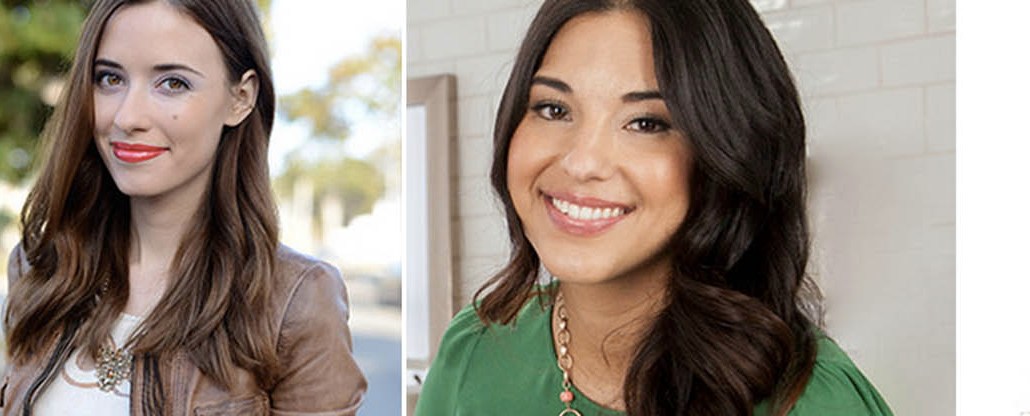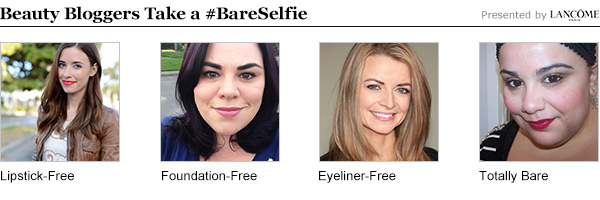
Publishers across the board are scrambling to cement their native ad strategies, and Hearst is no different.
Yesterday, it launched content ad campaigns for Lancôme on MarieClaire.com. The Pinterest-like ad is an interactive selection of images, skin care tips and blog content from 12 bloggers. Users will roll over a portrait of each blogger to reveal #bareselfie images of the bloggers taken after using the Lancôme product, quotes from their individual “skin stories,” or further info about the product.
The ad content is promoted on Marie Claire with units that show thumbnail photos of the bloggers under the headline “Beauty Bloggers Take a #BareSelfie,” along with a notation it is “presented by Lancôme.” The campaign will run in various areas of MarieClaire.com through Feb. 14.
The campaign is launching six months after Hearst took its first steps into the native ad fray in June, when it introduced five homegrown products for mobile, social media and video. The Lancôme campaign uses what Hearst is calling a Trend Collage, which is geared toward image-heavy fashion campaigns.
In creating the line up, Hearst is following a similar path to its peers. At The New York Times, while much attention has focused on its paid-posts product, the company is banking as much on an “organic” ad strategy that more tightly weaves ads within the editorial flow.
Ad position: web_incontent_pos1
These types of approaches, almost a necessity in a historically rough time for ad sellers, have been decried by critics as a crumbling of the walls between advertising and editorial. Hearst shows no such squeamishness. In fact, Hearst CRO Todd Haskell said, “At times, our editorial team will collaborate or contribute to branded content campaigns,” though staffers can always say no if they wish.
Last September, Harper’s Bazaar ran another Trend Collage campaign to promote the Ugg Collection by Nordstrom. Users clicking on the ad, running on the fashion channel, were brought to a gallery of Ugg’s shoes on a Harper’s Bazaar page headlined “12 Cozy-Chic Shoes You Need Now.”
The ad opened to a product description page and allowed consumers to share the content and purchase the product. Initial tests on Hearst’s native content module produced a click-through rate between 1 and 1.5 percent compared to the industry average of .1 percent on traditional display ads, according to Hearst.
Hearst has also had success incorporating native ads into their daily newsletter “The List,” where products are presented in a similar layout as Harper’s editorial picks. Brands like David Yurman, which had yet to experiment with traditional branded content, have jumped at the chance to take advantage of the unit, according to Haskell.
Ad position: web_incontent_pos2
“The unit needs to be transparent to the reader, but should not be in a position traditionally held by an ad,” said Haskell. “Since these programs require a close collaboration between our teams and those of our clients, we require substantial spending commitments for each campaign that is launched.”
More in Media

NewFronts Briefing: Samsung, Condé Nast, Roku focus presentations on new ad formats and category-specific inventory
Day two of IAB’s NewFronts featured presentations from Samsung, Condé Nast and Roku, highlighting new partnerships, ad formats and inventory, as well as new AI capabilities.

The Athletic to raise ad prices as it paces to hit 3 million newsletter subscribers
The New York Times’ sports site The Athletic is about to hit 3 million total newsletter subscribers. It plans to raise ad prices as as a result of this nearly 20% year over year increase.

NewFronts Briefing: Google, Vizio and news publishers pitch marketers with new ad offerings and range of content categories
Day one of the 2024 IAB NewFronts featured presentations from Google and Vizio, as well as a spotlight on news publishers.
Ad position: web_bfu


